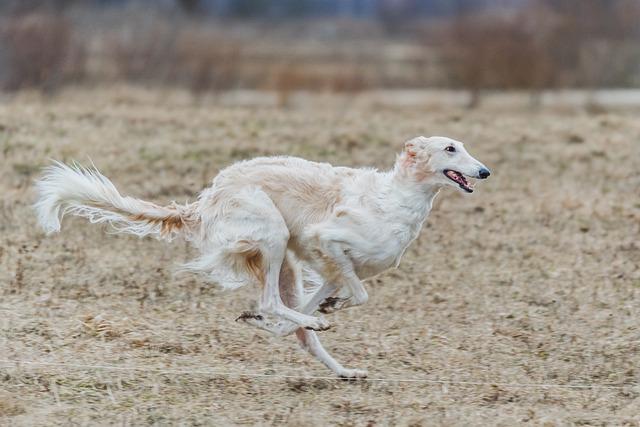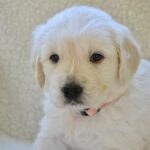Reinforcement is the key to consistent success.
Few refrains are heard from dog owners as often as, “But, he does it at home.” A close runner up is, “But, he knows better than that.” In agility circles, these equate to, “He’s ignoring me,” “He just blew me off,” “That jump was right in front of him” and “He’s a real sucker for the tunnel; there’s nothing I can do about that!” The underlying implication is that our dogs do things to spite us, but this flies in the face of what we know about animal behavior.
In a word, it’s all about reinforcement. Reams of scientific studies back one of the basic tenets of animal behavior: An animal will do what works, and what works is any behavior that gets reinforced in some way. Animals are not going to expend precious resources (energy) doing things that don’t get a return. That’s why a lion is going to chase the slowest or weakest wildebeest in the herd instead of expending much more energy trying to take down a robust adult.
The best trainers in the world have a keen understanding of how to apply reinforcement for behaviors they want and how to withhold reinforcement for behaviors they don’t want. It’s as simple as that.
Let’s look at some typical laments and see what’s really going on.
“But, he does it at home.”
Dogs are what are known as contextual learners. What they learn in one location may not be transferred to another location. Additionally, dogs need to be presented with gradually increasing distractions in each location to attain true mastery of a skill. If your dog responds to the Sit-Stay cue in your living room with only you present, will it respond just as well if someone comes to your front door and rings the doorbell? Will it Sit-Stay on the start line of an agility course?
A lot of work must be done from the simple Sit-Stay in your living room to the start line in class or at a trial. Begin by breaking down behaviors into the three Ds of dog training: duration, distractions and distance. Each of these must be generously reinforced in a variety of locations for generalization to occur.
Without distractions, gradually build the duration of your dog’s Sit-Stay so it can Stay for at least 30 seconds (which is about the amount of time you will need to leave your dog on the start line and move to your lead-out position on a course). Next, add some mild distractions while lowering your duration criterion, and then combine the two so your dog will Sit-Stay longer in the midst of more distractions. Depending upon the behavior you’re working on, you might also add a distance component, such as a Sit-Stay as you move farther away, or cuing the behavior while you stand a distance away from the dog.
Agility competition is a highly arousing and, thus, distracting context. When practicing, make sure you take those weave poles to the park at a busy time of day!
“He knows better than that.”
How do you know? All animals have free will and make choices, but with the strategic application of reinforcement, we can stack consequences in our favor.
Let’s say, for example, your dog jumps up on a visitor. Does it know better or has it been reinforced by people for doing that? All it takes is a look, a touch or a word for dogs to find jumping up more reinforcing than sitting calmly, which often gets ignored.
This is seen at the agility start line all the time. Trainers often forget to reinforce the Sit-Stay, and the dog does what gets reinforced, which is running the course or doing a particular obstacle. The dog does know better. It knows what works or pays off the best, and what doesn’t.
“He’s ignoring me” and “He just blew me off.”
It often appears that a dog ignores its handler’s cues when, in actuality, the handler has inadvertently reinforced slow responses in the past or given the verbal cue too late. Sometimes, the verbal cue conflicts with other physical cues the handler is giving.
For example, some agility handlers use the verbal cue “here” to elicit hand targeting (the dog touches its nose to the handler’s palm), but also use that same verbal cue to get the dog to take the obstacle that’s closest to the handler. If the handler sends the dog into a tunnel and upon its exit says, “here,” how does the dog know which behavior is expected, especially when running at warp speed out of a tunnel? The dog guesses or does what has been most richly reinforced.
Carefully consider your list of cues so each cue means only one thing. Once your dog understands what a cue means, then reinforce only when it responds quickly. Slow responses will decrease because they are not reinforced.
“That jump was right in front of him” and “He’s a real sucker for the tunnel; there’s nothing I can do about that!”
As you can probably guess by now, the answer to both of these is about how reinforcement is used. If a dog runs around a jump that was right in front of it, then the dog needs more reinforcement for jumps than it does for performing tunnels or other obstacles.
Going around a jump exerts less energy than jumping over it. Make a jump worth your dog’s while. Place a single jump about 2 to 3 feet in front of you and your dog. If the dog even glances toward it, throw your toy or food reward over the jump. Pretty soon your dog will be taking steps toward that jump, and you will reinforce that. The goal is to have your dog seek out jumps because they provide a high level of reinforcement.
Reinforce and repeat
Training is simply a numbers game: How many times have you reinforced a behavior? It could take hundreds of reinforcers to help your dog truly master a given skill, regardless of location and other competing opportunities.
Can your dog take jumps at different angles? Can your dog get weave-pole entries regardless of where you are positioned? Can your dog do the weave poles at the public park? Will your dog take the A-frame instead of the tunnel right next to it? Don’t assume that it can or will. Start racking up those numbers.
Your reward is a team that celebrates the victories of your training instead of lamenting the losses.



